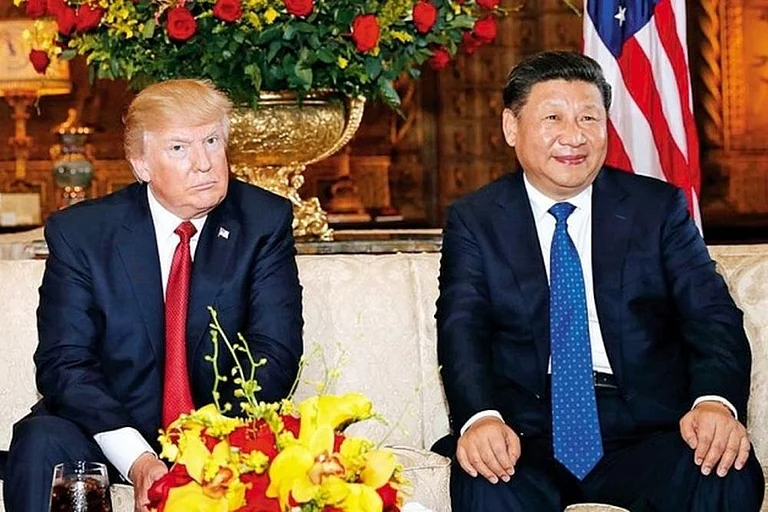
President Donald Trump’s meeting with Chinese President Xi Jinping aimed to revive stalled trade negotiations, but officials and analysts predict only modest outcomes rather than a sweeping deal.
Talks covered trade issues such as tariffs, agricultural imports, and rare-earth exports, while also touching on sensitive geopolitical topics including Taiwan and Ukraine, raising concerns over possible US concessions.
With Trump threatening new tariffs and Beijing responding with sanctions, the summit comes amid heightened economic tension. Any resulting agreement is expected to ease friction temporarily without resolving deeper conflicts.
US President Donald Trump met Chinese President Xi Jinping this week in a high-stakes bid to clinch a long-awaited trade deal, though officials on both sides admit the outcome may fall short of the sweeping pact once envisioned. The meeting, held amid rising economic and geopolitical tensions, was seen as an attempt by Trump to secure a quick diplomatic and economic win that could ease strains between the two global powers.
According to reports, Trump sought to extend the tariff truce on Chinese goods in exchange for Beijing resuming large-scale purchases of American soybeans, tightening its crackdown on fentanyl production, and loosening export controls on rare-earth materials crucial to US industries. “We’ll make a deal on, I think, everything,” Trump reportedly told aides, signalling optimism. However, analysts believe the discussions are more likely to yield modest outcomes — steps to defuse tensions rather than resolve the deep-rooted structural conflicts that define US-China relations.
The contrast in negotiating styles was evident. Trump, known for his desire for swift, visible wins, approached the meeting seeking measurable gains that could be touted as victories. Xi, by contrast, maintained a long-term, strategic posture, using China’s dominance in manufacturing and critical mineral supply chains as leverage. Beijing’s control over rare-earth exports remains a powerful bargaining chip, and experts say it is unlikely to concede on this front without major US compromises. “Reversing such a policy would require a monumental concession from the US,” said Sun Chenghao, a Beijing-based scholar quoted in the report.
Beyond trade, the meeting also touched on sensitive geopolitical flashpoints, including Taiwan and Ukraine. China pressed Washington to formally oppose Taiwanese independence, while Trump remarked that Taiwan “will probably be on the table,” raising concern among US strategists that his eagerness for a deal could lead to concessions on key national-security issues. Observers also noted that Trump may seek to involve Beijing in moderating Russia’s stance on the war in Ukraine, as part of a broader regional bargain.
The talks come at a precarious time for global markets. Trump has threatened tariffs of up to 100% on Chinese imports, while Beijing has retaliated with its own restrictions and sanctions. The uncertainty has rattled investors and heightened risks across Asia, where several economies depend on stable trade flows between the world’s two largest markets. Economists suggest that while the US holds stronger leverage due to China’s reliance on its consumer market, a comprehensive trade agreement remains distant.
Trump is expected to travel to other Asian nations, including Malaysia, Japan and South Korea, in the coming days, both to bolster alliances and to strengthen his negotiating hand before any final deal with Beijing. With the current tariff truce set to expire in November, the clock is ticking for both sides to find common ground.
For now, what may emerge from the Trump-Xi summit is a partial, face-saving accord — one that reduces friction but falls short of transforming the world’s most consequential economic relationship.

























